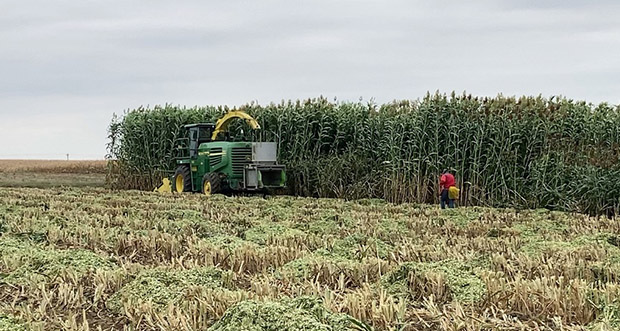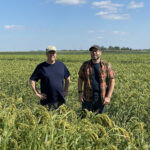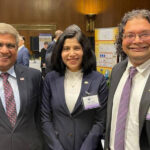
AMES, Iowa – Sorghum is a productive and versatile annual crop used worldwide for livestock feed. Until now, the plant, which originated in the tropics, has done best in warmer regions with longer growing seasons than the Upper Midwest.
A new USDA-supported project will test and release several new sorghum cultivars that promise high-yielding, nutritious forage for beef and dairy cattle operations in the north-central states.
The project will be led by Maria Salas-Fernandez, associate professor of agronomy at Iowa State University, who directs the northernmost public sorghum breeding program in the United States.
The effort is funded by a $498,960 grant from the USDA National Institute of Food and Agriculture’s Agriculture and Food Research Initiative. It will facilitate evaluation of Salas-Fernandez’s sorghum parental lines created from germplasm adapted for northern growing conditions, including drought-prone areas with sandy soils and low organic matter in the Dakotas and Wisconsin.
“Sorghum offers a number of economic and environmental benefits,” Salas-Fernandez said. “The seed is cheaper than corn, and it grows well with fewer inputs of pesticides and fertilizer. At the same time, it is an annual crop that uses similar equipment and familiar cultivation methods, so it fits well with conventional crop rotations in this region.”
Partners on the project are Christopher Graham and Sara Bauder, South Dakota State University Extension; Marisol Berti, North Dakota State University; and Matt Akins, USDA Agricultural Research Service Dairy Forage Research Center in Wisconsin.
The team of researchers will evaluate advanced experimental sorghum hybrids for alternative systems (hay, green chopping, grazing and silage) in regional trials at eight locations in Iowa, North Dakota, South Dakota and Wisconsin. Additionally, the treatments will be evaluated to help select the best performing hybrids for those production systems and locations and refine management recommendations.
“Our overall goal is to take the next steps to make new sorghum germplasm available for public use to benefit beef and dairy producers in northern states to improve the profitability and sustainability of their farming operations,” Salas-Fernandez said. “It will also be especially valuable to numerous small and mid-size seed companies that do not have proprietary sorghum germplasm and help them supply the best performing cultivars for their northern clients.”
Another focus of Salas-Fernandez’ work has been the development of sorghum strains tailored for biomass production in northern latitudes. Tests of those materials in Iowa and Michigan, including at the Great Lakes Bioenergy Research Center, have had promising results.
In photo above: Harvesting a sorghum field for yield trials conducted each year by Iowa State to evaluate biomass yield for hundreds of new hybrids. Photo courtesy of Maria Salas-Fernandez.
Contacts
Maria Salas-Fernandez, 515-294-9563, mgsalas@iastate.edu
Ann Robinson, Agriculture and Life Sciences Communications, 515-294-3066, ayr@iastate.edu





